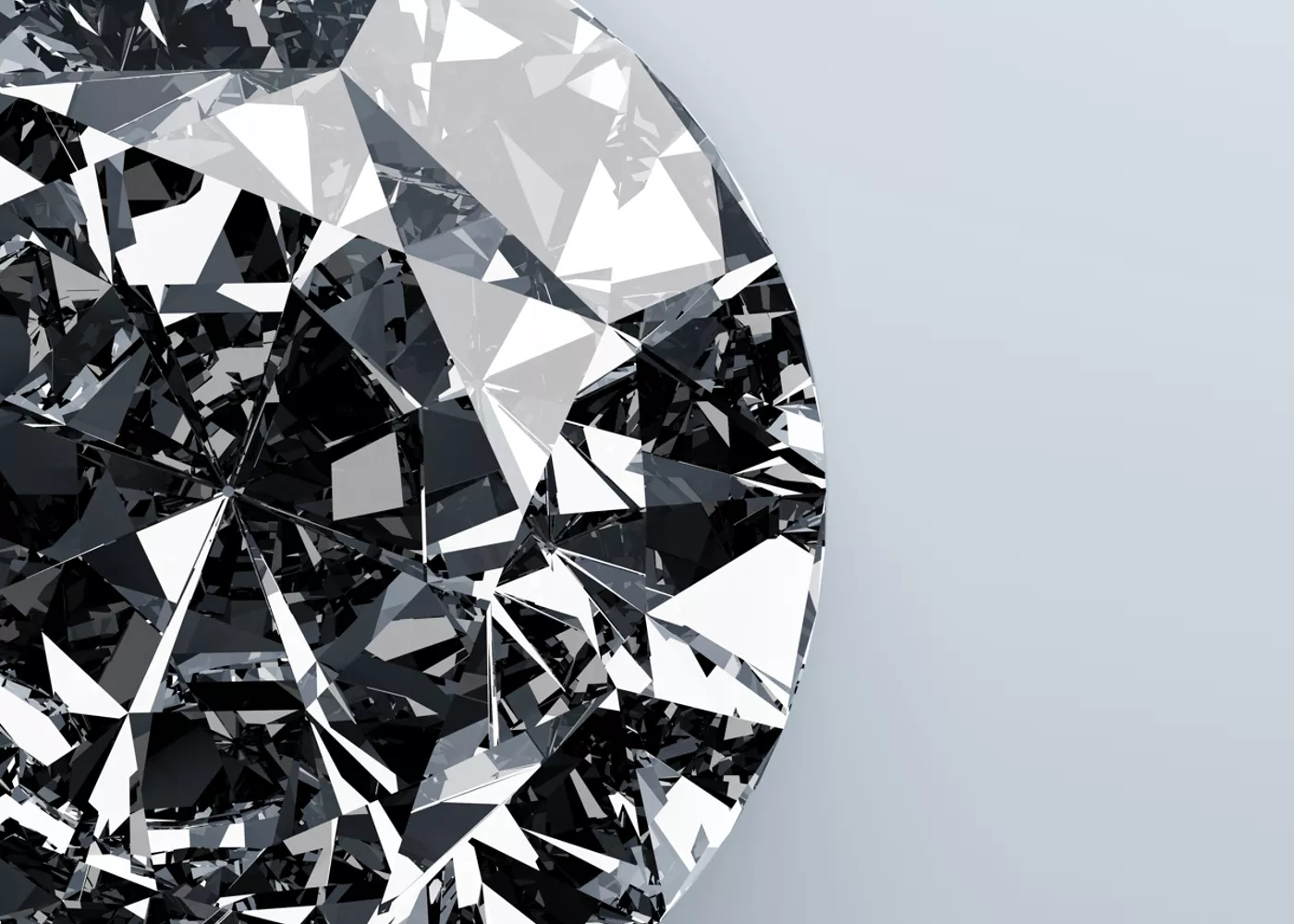
What Makes the Brilliant Diamond Cut So Brilliant?
When you’re choosing diamonds in the Design Center, you’ll notice a drop-down menu for diamond type. You’ll also notice that all of our diamonds are brilliant cuts. There’s just no better way to show off a diamond’s beauty than through this complex and exacting cut. So what is it that makes the brilliant cut so brilliant?
Shape and Cut
But first, a word on the terms “shape” and “cut.” You’ll often hear people talk about shape and cut as if the terms were interchangeable. “Cut” refers to the arrangement of facets. The same cut can be presented in a number of shapes. “Brilliant” is the cut, and “round” is the shape.
Brilliant Cut Defined
The round brilliant is the archetypal diamond. What does it look like? Well…just imagine a diamond. You’re probably picturing a round brilliant and not, say, a marquise or a pear shape or a cushion or Asscher cut. It’s the kind of diamond represented by the icon for the “Diamonds” tab in the Design Center. The “O” in our logo is the top of a round brilliant. Count the facets: 32 plus the large table in the middle. If you could flip it over, you’d find another 24 on the pavilion (the longer bottom part of a brilliant cut diamond) for a total of 57.
While a brilliant cut diamond can take a number of shapes, it’s that precise number and arrangement of facets that defines the brilliant cut. Brilliant cut diamonds have 57 facets: 56 symmetrical facets and a large flat facet on top (the table). Sometimes the small octagonal facet at the point on the bottom (the culet) is counted as the 58th.
History of the Brilliant Cut
Why did this particular cut become so popular? It’s a long story, the end result of years of work by jewelers to maximize the optical properties that make diamonds special. A poorly cut diamond isn’t all that appealing to look at. It doesn’t sparkle all that much. It lacks that dynamic interplay of light and shadow. An uncut diamond is just kind of translucent, like a little chip of ice. It takes a master in the art and science of gemstone cutting equipped with modern tools to bring a diamond to life.
Those modern tools are what make modern gemstone cuts like the brilliant possible. Diamonds are hard—a 10 (out of 10) on the Mohs hardness scale. The only thing that can cut a diamond is another diamond. Before the advent of modern lapidary tools, diamonds were just polished and set in their natural octahedral shape. They just weren’t as appealing to look at or as easy to work with as other stones, and for much of history, rubies, emeralds, and sapphires were valued much more highly than diamonds.
Improvements in cutting tools, a greater understanding of optics (the study of the behavior of light), and a lot of complex mathematics changed all of that. By the 1800s, jewelers had discovered that 57 was the ideal number of facets for bringing out the unique optical properties of the diamond, those properties being refraction and dispersion.
Diamonds, comprised of tightly-packed carbon atoms in a crystalline structure, are an extremely dense medium and have a high refractive index. Refraction occurs when the path of light is changed when it enters a new medium, like water. It’s why your straw looks cut in half when you look at your glass of water from the side, or why the body of someone standing in a pool looks tiny and squat under the water.
Where there is a high degree of refraction, there is also dispersion. When light is dispersed, it is broken up into the separate colors that comprise it. Prisms, for instance, are dispersive. In the same way that water droplets in the sky refract light and disperse it to create rainbows, an expertly cut diamond refracts light and disperses it to create the colorful sparks that seem to dance across its surface.
19th century cuts like the Old Mine cut and the Old European cut let light play inside a diamond as it never had before, but diamonds would soon become even more beautiful. If you’ve ever seen an antique diamond, it may have looked a little underwhelming in comparison to today’s diamonds. That’s not because it’s old but because there was still another advancement to be made before we could reach the diamond’s true potential.
In 1919, A PhD student named Marcel Tolkowski determined the exact angles at which to cut a diamond’s facets to maximize the brilliance and fire of a diamond. The idea is to prevent light from escaping through the facets and making sure as much of it as possible gets reflected back up to the face. A brilliant discovery, but that’s not what gives the cut its name. The brilliant cut is all about light. What we call “brilliance” refers to the amount of white light the diamond reflects. “Fire,” meanwhile, describes the multicolored sparkles that make diamonds so captivating.
The dance of light and shadow, of clarity and color—that’s what makes the brilliant cut so brilliant.